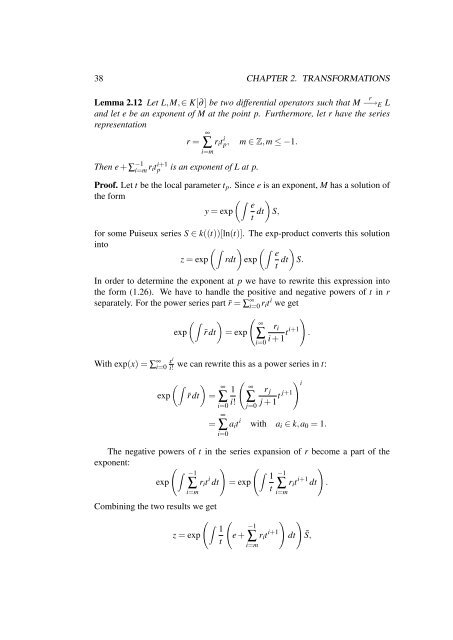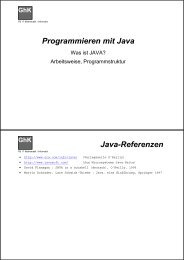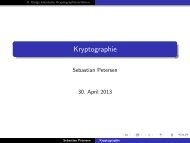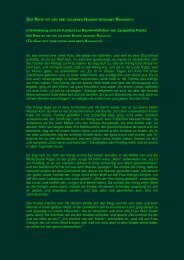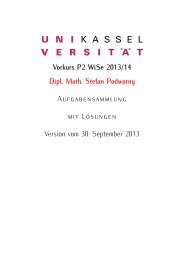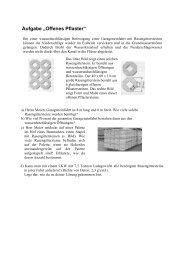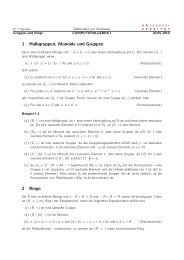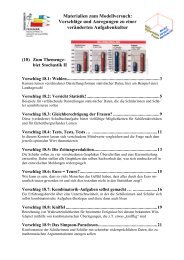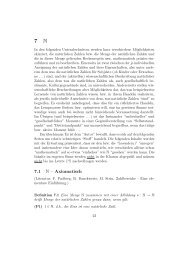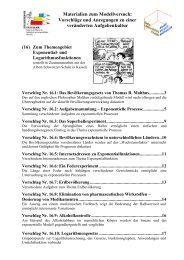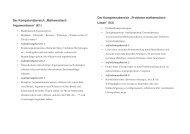Solving Differential Equations in Terms of Bessel Functions
Solving Differential Equations in Terms of Bessel Functions
Solving Differential Equations in Terms of Bessel Functions
Create successful ePaper yourself
Turn your PDF publications into a flip-book with our unique Google optimized e-Paper software.
38 CHAPTER 2. TRANSFORMATIONS<br />
Lemma 2.12 Let L,M,∈ K[∂] be two differential operators such that M r<br />
−→E L<br />
and let e be an exponent <strong>of</strong> M at the po<strong>in</strong>t p. Furthermore, let r have the series<br />
representation<br />
r =<br />
∞<br />
∑ rit<br />
i=m<br />
i p, m ∈ Z,m ≤ −1.<br />
Then e + ∑ −1<br />
i=m riti+1 p is an exponent <strong>of</strong> L at p.<br />
Pro<strong>of</strong>. Let t be the local parameter tp. S<strong>in</strong>ce e is an exponent, M has a solution <strong>of</strong><br />
the form<br />
<br />
e<br />
y = exp<br />
t dt<br />
<br />
S,<br />
for some Puiseux series S ∈ k((t))[ln(t)]. The exp-product converts this solution<br />
<strong>in</strong>to<br />
<br />
z = exp<br />
<br />
e<br />
rdt exp<br />
t dt<br />
<br />
S.<br />
In order to determ<strong>in</strong>e the exponent at p we have to rewrite this expression <strong>in</strong>to<br />
the form (1.26). We have to handle the positive and negative powers <strong>of</strong> t <strong>in</strong> r<br />
separately. For the power series part ¯r = ∑ ∞ i=0 rit i we get<br />
With exp(x) = ∑ ∞ i=0 xi<br />
i!<br />
<br />
exp<br />
<br />
exp<br />
<br />
∞<br />
ri<br />
¯r dt = exp ∑<br />
i=0 i + 1 ti+1<br />
<br />
.<br />
we can rewrite this as a power series <strong>in</strong> t:<br />
<br />
¯r dt =<br />
=<br />
∞<br />
∑<br />
i=0<br />
∞<br />
∑<br />
i=0<br />
<br />
∞ 1<br />
i! ∑<br />
j=0<br />
i r j j+1<br />
t<br />
j + 1<br />
ait i with ai ∈ k,a0 = 1.<br />
The negative powers <strong>of</strong> t <strong>in</strong> the series expansion <strong>of</strong> r become a part <strong>of</strong> the<br />
exponent:<br />
<br />
<br />
exp<br />
−1<br />
∑ rit<br />
i=m<br />
i <br />
<br />
1<br />
dt = exp<br />
t<br />
Comb<strong>in</strong><strong>in</strong>g the two results we get<br />
z = exp<br />
<br />
<br />
1<br />
t<br />
e +<br />
−1<br />
∑ rit<br />
i=m<br />
i+1<br />
−1<br />
∑ rit<br />
i=m<br />
i+1 <br />
dt .<br />
<br />
dt<br />
<br />
¯S,


